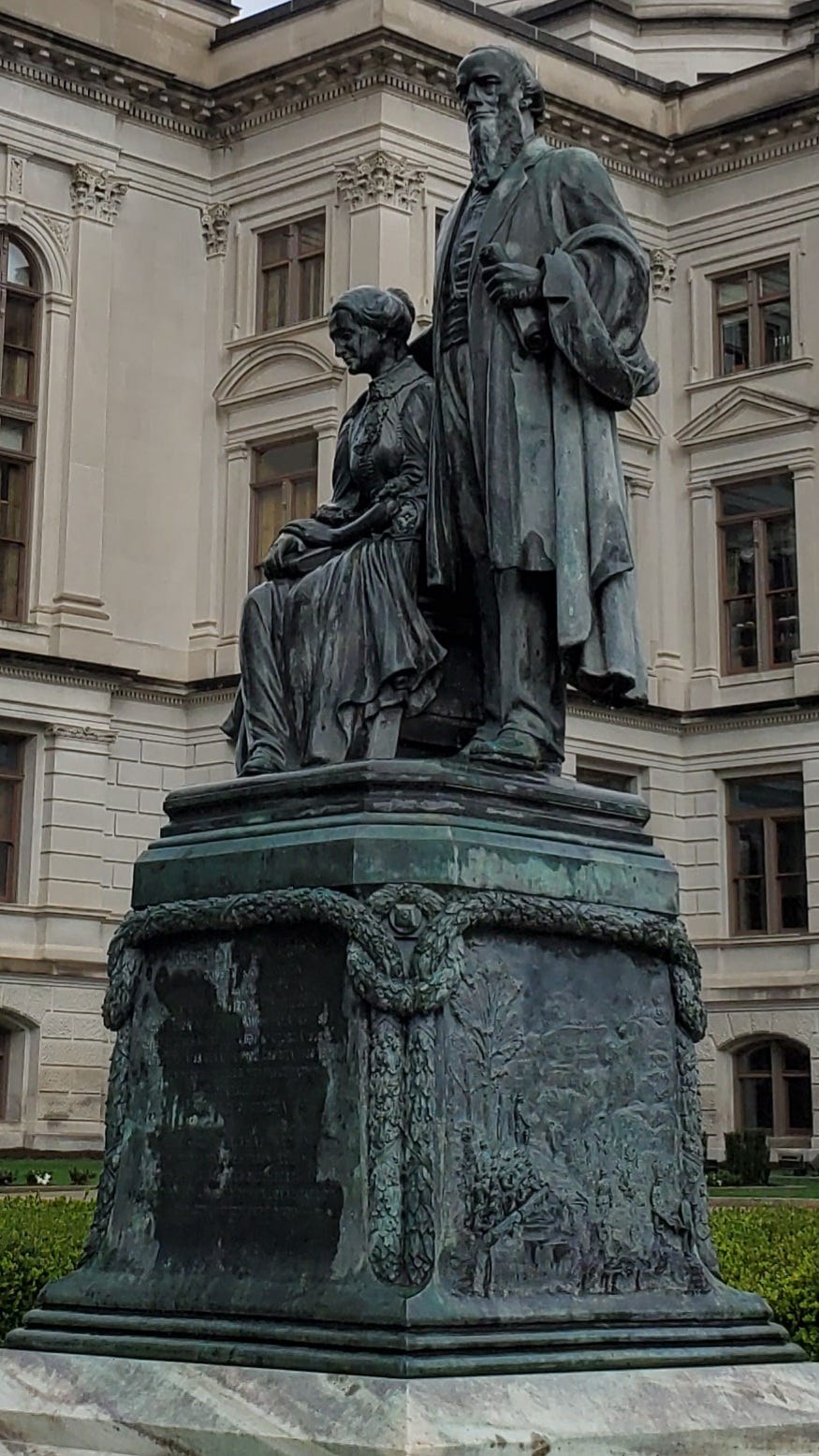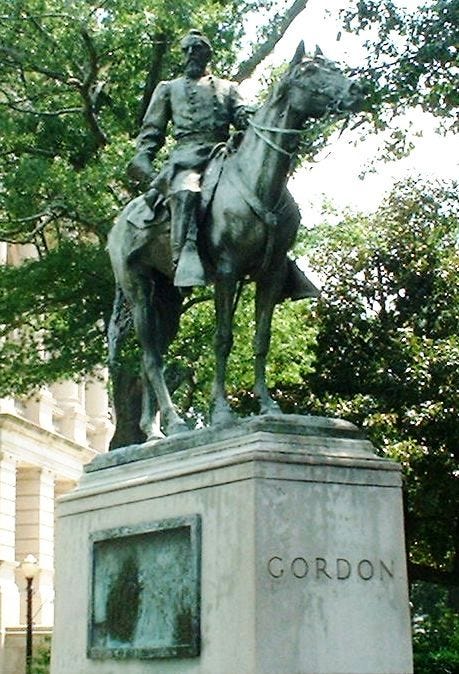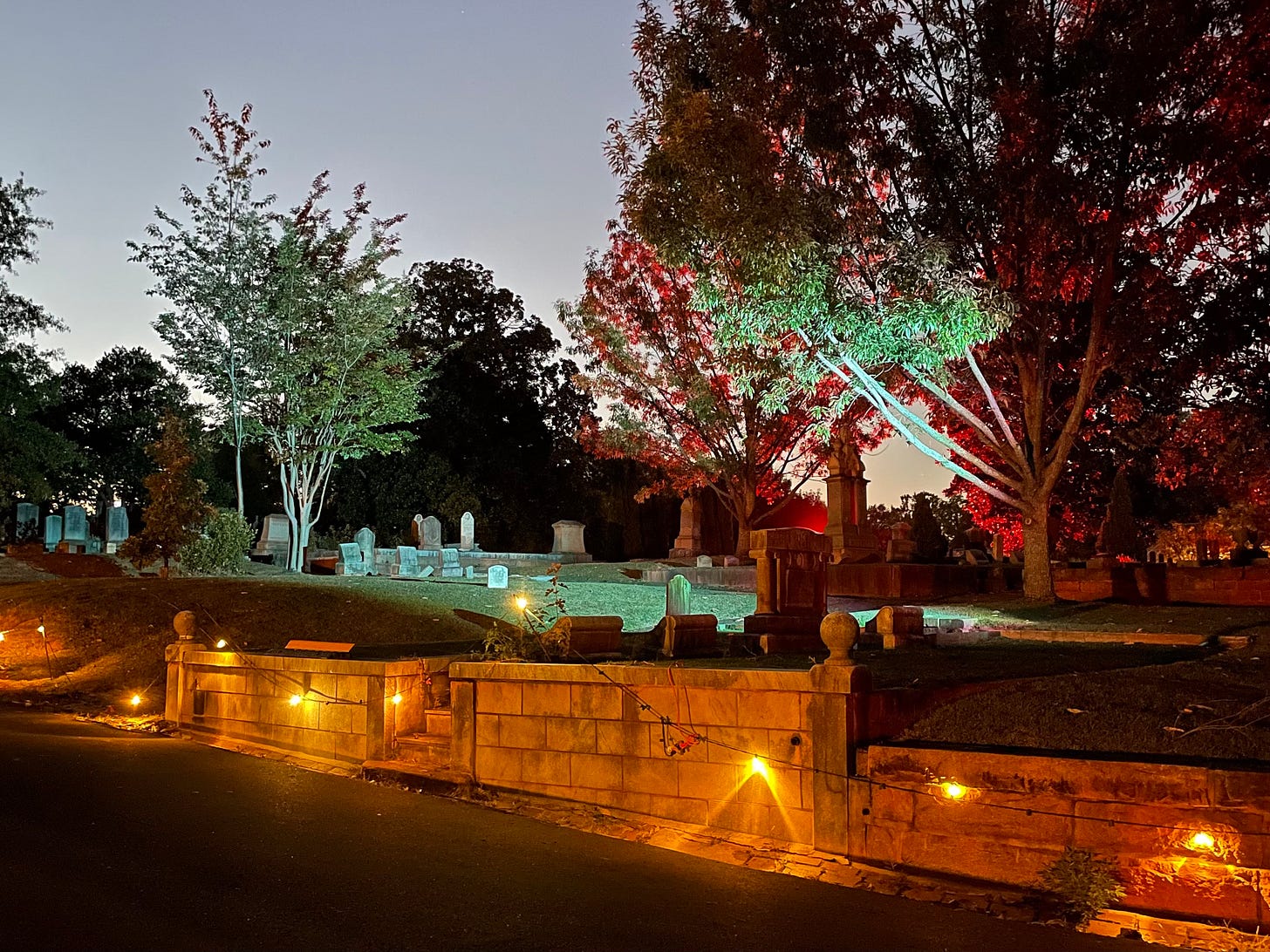“I’m going to ask it,” one of my cemetery tour participants announced to his friends, loud enough for me to overhear as our group was slowing to a stop. We’d already been held up a few times that night, waiting for the group ahead of us to clear out so we could meet the next resident of Oakland Cemetery in Atlanta, Georgia, who would share their life story during Capturing the Spirit of Oakland.
So far that evening, the residents we’d met were a woman who worked for her family’s funeral home and three men: a saloonkeeper, a World War I soldier, and a barber. From the saloonkeeper and the barber, we’d learned about the Atlanta Race Massacre of 1906. The World War I soldier had talked about the discrimination he’d faced in the Jim Crow South. We were about to meet a woman who’d been a professional photographer and an active member of the Women’s Christian Temperance Union during her lifetime, but she wasn’t done talking to the group ahead of us yet.
My job as guide in these moments while our group waited was to offer some information about the cemetery’s history and to point out notable residents buried nearby.
Who I wasn’t talking about
At that moment, our group was stopped next to a grassy lawn that if you didn’t know better you might think was open burial space in the cemetery. It’s actually the resting spot for more than 3,000 unknown Confederate soldiers who were killed during the Battle of Atlanta. These soldiers were initially buried in battlefield graves in and around the city, but a few years after the war, the Atlanta Ladies Memorial Association raised money to rebury the soldiers at Oakland and to erect a Confederate monument, the Confederate obelisk, which still stands at the cemetery today. A couple decades later (1890s), another monument referred to as the Lion of Atlanta was installed over the burial grounds for the unknown soldiers. In 2021, after repeated vandalism, the Lion was removed by the city.
During the general tours I give at the cemetery, I share information about how Atlanta was a major hospital center during the war, which led to thousands of soldiers being buried in Oakland even before the fighting reached the city (there are nearly 7,000 soldiers total). I talk about the efforts of the Atlanta Ladies Memorial Association to rebury the dead and to erect Confederate monuments at the cemetery. I discuss how Confederate Memorial Day celebrations at the cemetery perpetuated the myth of the Lost Cause, which argues that the Civil War was about states rights not slavery and ignores the major result of the war: the emancipation of four million enslaved people.
Since I didn’t want to tackle this intricate topic in what might only be a brief stop, I called out to the guy who had said he was “going to ask it.”
“What’s your question?” I asked him.
“Who’s the worst person buried here?”
Who came to mind
I’ll start with the disclaimer that although I considered this question extremely interesting from a philosophical standpoint, there was no way I was going to answer it. Still, when someone says don’t think about an elephant, the first thing you’re going to think about is an elephant, so I can’t lie and say that a few folks didn’t come to mind.
Perhaps it was the fact that we were stopped next to the Confederate burial grounds, but the first people I considered were two former Georgia governors who were involved in the Civil War and who are laid to rest at the cemetery: Joseph E. Brown and John Brown Gordon. The former, Joseph E. Brown, was the governor during the war, and after the war, he promoted convict labor leasing (a.k.a., slavery by another name) and built his own fortune using it. The latter, John Brown Gordon, achieved the rank of major general during the war, and after the war, he is thought to have played a leading role in the KKK in Georgia.
(1) Championing convict labor leasing and (2) supporting a secret organization whose aim was to intimidate newly free Blacks with violence both stand out to me as reasons why these men might qualify as “the worst,” but they both enjoyed popular support during their lifetimes and were honored with statues in front of the Georgia State Capitol that still stand today:


As we discuss here often on The Silent Sod, the memory of the dead is not fixed. It is in the hands of the living. Abraham Lincoln is universally revered today, but he almost wasn’t elected to a second term, and I think it’s fair to say he was not beloved by the people of the South during the war.
Given that a person’s legacy can vary over time, I think it’s important to refine the question about who might be the worst: “the worst when and according to whom?”
History is complicated
One of the themes that came out of the residents’ stories at this year’s Capturing the Spirit of Oakland is that history is complicated, and ultimately, this is how I eventually answered the question about who was the worst person buried at the cemetery.
Throughout the tour, we had heard from residents of the cemetery who had experienced violence and discrimination, but we hadn’t heard from perpetrators detailing their actions. In a way, this makes sense: the events organizers wanted to provide a platform for formerly marginalized voices. But this leaves the audience gazing into the darkness of the cemetery wondering where the citizens whose actions reinforced white supremacy are resting.
Another governor who came to mind when I was asked about the worst person buried at Oakland was Hoke Smith. He ran his 1906 campaign for governor on the promise of disenfranchising Black voters, and the fear mongering of his and his opponents’ campaigns fueled the animosity that eventually led to the Atlanta Race Massacre of 1906. As governor, Smith did follow through on his promises of disenfranchisement, however, he also outlawed the convict labor leasing system that disproportionately affected Black residents of Georgia. Does that make him the “worst…but”?
I didn’t mention any of the governors I’d thought of to my group, but I did recommend a tour offered at the cemetery, Fear and Accusation: The Leo Frank Story. This tour focuses on the cemetery residents involved in the anti-semitic lynching of Leo Frank, including yet another governor, John M. Slaton, who commuted Frank’s sentence from execution to life in prison (a decision that destroyed Slaton’s political career and did not save Frank). The thing I appreciate about this tour is that is gives its audience an understanding of how residents of the cemetery on all sides of this incident played a role.
The unreality of our reality
Today is Election Day in the United States, and the American people are choosing between current Vice President Kamala Harris and former President Donald Trump. I am a strong Harris supporter, and one thing that I’m struggling with this election, as I’m sure many others are, is how it is possible that so many people could be voting for Trump when he is the worst.
I try to take comfort in the idea that Trump might win by thinking about how people I know, family members and former neighbors, support him, but it doesn’t help because the reality they are living in appears vastly different from the one I inhabit in a way that seems unprecedented. But is it?






Well said.
Sarah, a thought provoking and well considered perspective. Could not agree more wit your analysis. Ren Davis